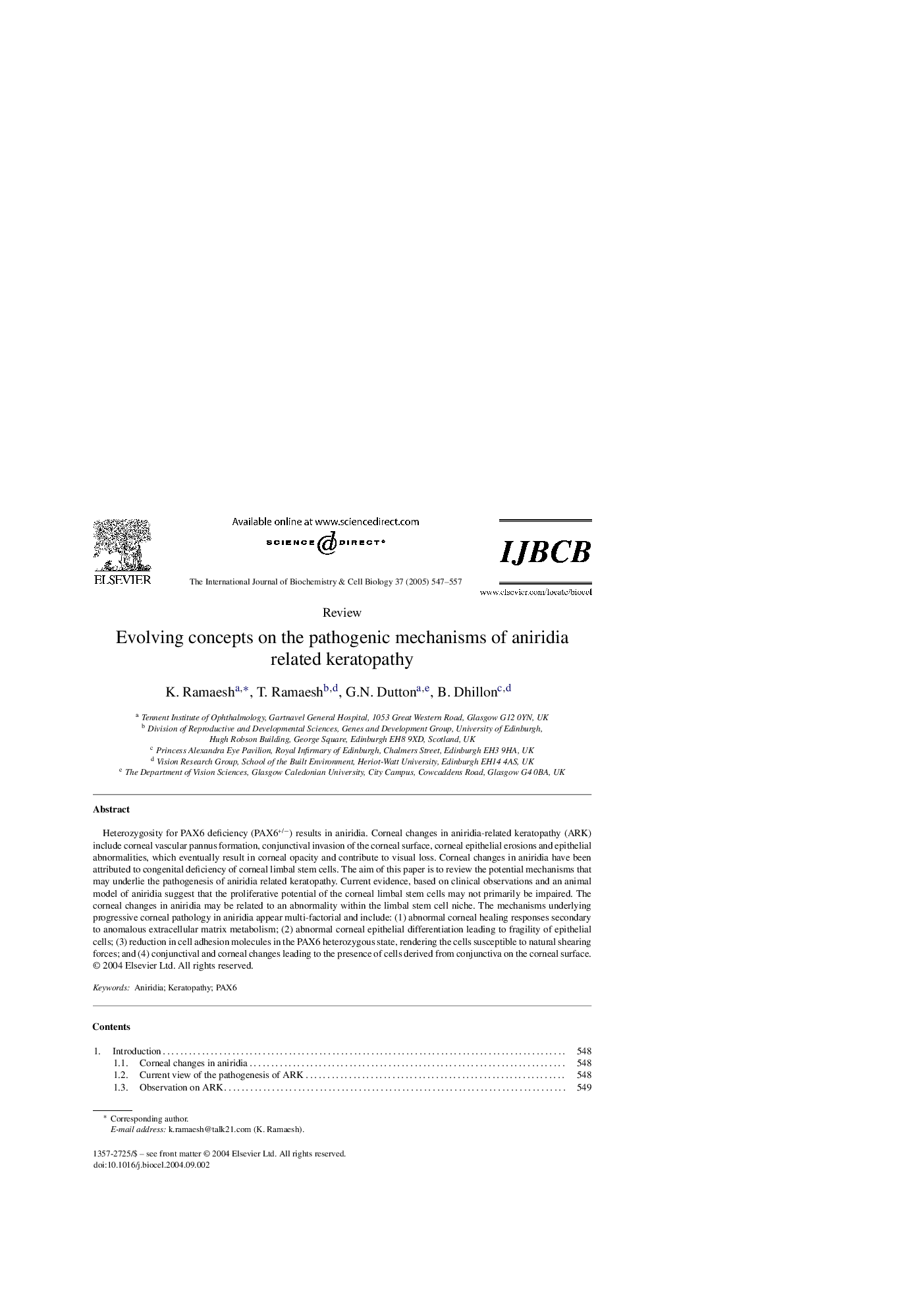| Article ID | Journal | Published Year | Pages | File Type |
|---|---|---|---|---|
| 9890077 | The International Journal of Biochemistry & Cell Biology | 2005 | 11 Pages |
Abstract
Heterozygosity for PAX6 deficiency (PAX6+/â) results in aniridia. Corneal changes in aniridia-related keratopathy (ARK) include corneal vascular pannus formation, conjunctival invasion of the corneal surface, corneal epithelial erosions and epithelial abnormalities, which eventually result in corneal opacity and contribute to visual loss. Corneal changes in aniridia have been attributed to congenital deficiency of corneal limbal stem cells. The aim of this paper is to review the potential mechanisms that may underlie the pathogenesis of aniridia related keratopathy. Current evidence, based on clinical observations and an animal model of aniridia suggest that the proliferative potential of the corneal limbal stem cells may not primarily be impaired. The corneal changes in aniridia may be related to an abnormality within the limbal stem cell niche. The mechanisms underlying progressive corneal pathology in aniridia appear multi-factorial and include: (1) abnormal corneal healing responses secondary to anomalous extracellular matrix metabolism; (2) abnormal corneal epithelial differentiation leading to fragility of epithelial cells; (3) reduction in cell adhesion molecules in the PAX6 heterozygous state, rendering the cells susceptible to natural shearing forces; and (4) conjunctival and corneal changes leading to the presence of cells derived from conjunctiva on the corneal surface.
Keywords
Related Topics
Life Sciences
Biochemistry, Genetics and Molecular Biology
Biochemistry
Authors
K. Ramaesh, T. Ramaesh, G.N. Dutton, B. Dhillon,
